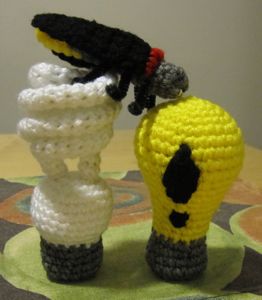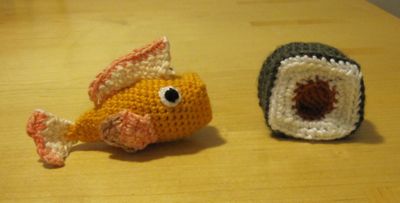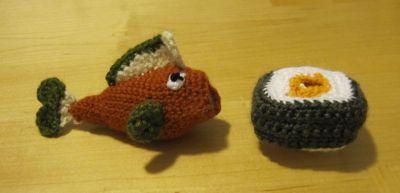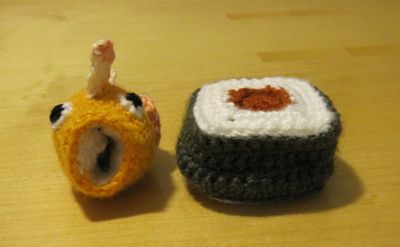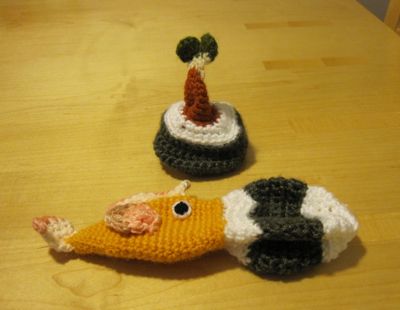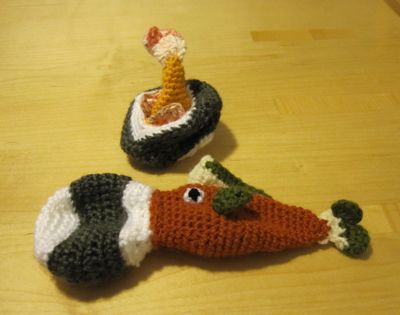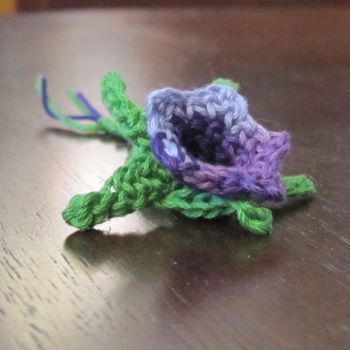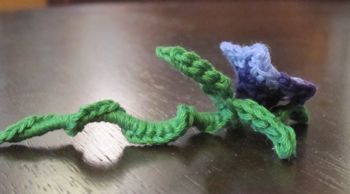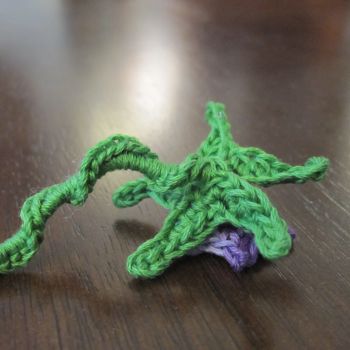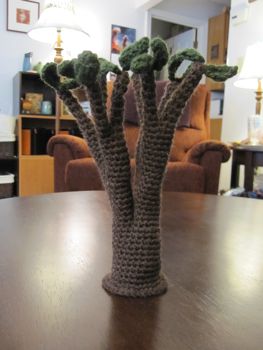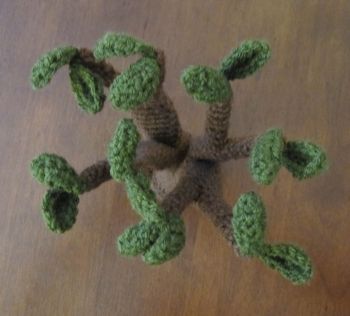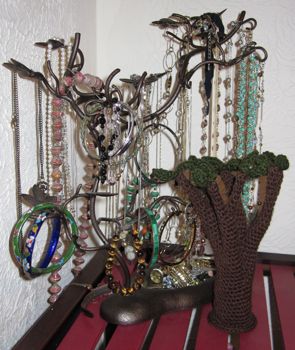I was struggling for today’s blog post, because I have a lot of works in progress but nothing super-near finishing. I was concerned about deciding the topic and then having to stay up until midnight finishing the project! However, I found my way. The other day I finally started Planet M File’s firefly, which was a quick project.
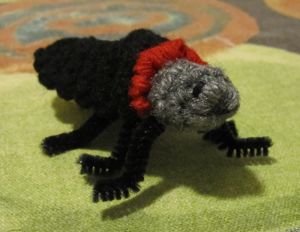
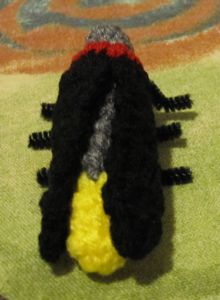
Using bright red instead of country red makes him look kind of like a vampire, to me, so I adjusted the facial embroidery accordingly.
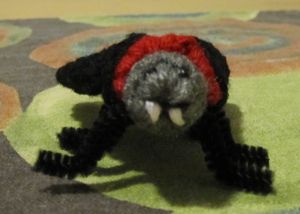
He vants to suck your blood.
Thinking of ways to make this a longer blog post, I brainstormed other things that light up. I figured there was no way that starting on Tuesday evening I would finish another animal that lights up, but I could do a lightbulb. So I did. A compact fluorescent lightbulb, in fact.
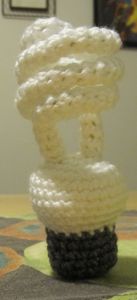
And then I made an incandescent light bulb to be his friend. I don’t know why cartoon lightbulbs are traditionally yellow, but I have a huge amount of mildly nasty-feeling yellow yarn so I went ahead and used it.
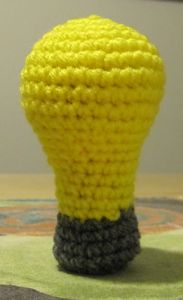
The incandescent was freehanded to match the CFL in size (which did not quite happen), but I have a pattern for the CFL.
Compact Fluorescent Lightbulb (modeled after a 60 Watt equivalent, but is larger):
» A cleaned up version of this pattern is now available with two other lightbulbs (incandescent and LED) as a name-your-price pattern in the store.
You need: small amounts of white and gray worsted weight yarn, appropriate hook for a tight stitch (I used E/3.5mm), two white (or silver or beige) pipe cleaners, and a small amount of stuffing. I also used small rocks in the bottom of both bulbs to get them to stand up.
In white: sc a tube 20″ long and less than 1 1/2″ around. This will depend on your gauge; for me with soft worsted weight yarn and an E hook, 5 sc around gave 1 3/8″ circumference. It does not matter how you start the tube because the ends will be hidden; magic ring, ch 2 and sc in first one, ch and join with sl st. Dealer’s choice.
After about 12″, stop and insert the first pipe cleaner. Your tube should be barely big enough for it. I like to fold the end over so the cut end can’t snag the yarn, and I recommend cutting about 1 1/2″ off the pipe cleaner to put the join closer to the middle of the tube. You will find that you can only push the pipe cleaner in from the end for so long, and then you have to scrunch the tube onto it. Finish the 20″ and leave a long enough yarn tail to sew the tube ends to the base of the bulb. Insert the second pipe cleaner to meet or slightly overlap the first, scrunch the end of the tube down a bit, cut the loose end off (should be about 3″, or 1 1/2″ if you cut the first one) and unscrunch the tube.
There is only so much you can do to get the tube into shape before it’s sewn onto the base, but to have the ends in the right places and orientation for sewing you should twist it now and fix it up later. At about 3/4″ from each side of the center point, fold the tube in opposite directions. You are looking at the top when it makes an S shape. Now coil the long ends around; each will make 1 1/2 rotations, interleaved with each other, before folding down to meet the base.
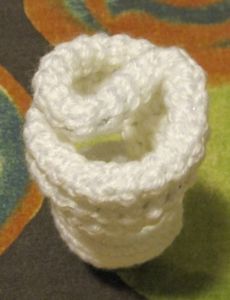
I’m not completely thrilled with the base, but as long as you shape it by hand it’s okay.
Edit, October 2014: I’ve cleaned up the pattern a bit to improve the shaping.
In white:
1. Form magic ring, ch 1, and sc 7.
2. 2sc around (14).
3. *Sc, 2sc* around (21).
4. *2sc, sc 2* around (28).
5. Sc 6, dec, sc 12, dec, sc 6 (26).
6-8. Sc around (26 sc; 3 rnds).
This is a good time to sew the bulb onto the base. Center the ends of the tube on row 2, across the center point from each other.
9. *Dec, sc 3* five times, sc (21).
10. *Dec, sc 2* five times, sc (16).
Needle join in 2nd st from end; FO white.
In gray:
Put slipknot on hook and sl st to row 10.
11. Beginning in the st after the sl st, *dec, sc 2* three times. Sc in same st as sl st (12).
12-15. Sc around (12 sc; 4 rnds).
Stuff! I used fiber until I got the the gray part and then switched to rocks.
16. *Dec* around (6).
FO. I had to stick some more rocks in before doing the final drawstring. Shape by hand; you could get a better form on the bulb if you stitched the coils together but I didn’t feel like it.
